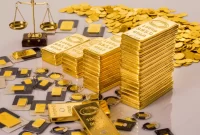Are you new to the world of Forex trading? In this beginner’s guide, we will provide you with a comprehensive overview of the basics of Forex trading, from what it is to how to get started. Whether you’re looking to invest or simply curious about this exciting financial market, this article is your go-to resource.
Understanding Forex Trading Basics
Welcome to “The Beginner’s Guide to Forex Trading.” In this article, we will provide you with a clear understanding of the basics of forex trading. Whether you are completely new to the forex market or have some knowledge, this guide will help you get started.
What is Forex Trading?
Forex trading, also known as foreign exchange trading, is the process of buying and selling currencies. The forex market is the largest and most liquid financial market in the world, with trillions of dollars worth of currencies being traded daily.
How Does Forex Trading Work?
Forex trading involves exchanging one currency for another with the aim of making a profit. Currency pairs are used to represent the exchange rate between two currencies. For example, the EUR/USD pair represents the exchange rate between the Euro and the US Dollar.
Key Concepts in Forex Trading
- Pips: Pips are the smallest unit of measurement in forex trading. They represent the percentage in points and are used to measure the price movement of a currency pair.
- Leverage: Leverage allows traders to control a larger position in the market with a smaller amount of capital. It amplifies both profits and losses.
- Technical Analysis: This involves analyzing historical price data to predict future price movements. Traders use various tools like charts, indicators, and patterns to make informed trading decisions.
- Fundamental Analysis: This involves analyzing economic, social, and political factors that can impact currency prices. News events and economic indicators play a significant role in fundamental analysis.
Benefits of Forex Trading
Forex trading provides several benefits, including high liquidity, 24/5 market access, the ability to profit in both rising and falling markets, and the potential for high returns. However, it is essential to understand the risks involved and have a solid trading plan in place.
Conclusion
In conclusion, this article has provided a brief overview of the fundamentals of forex trading. It is important to continue learning and gaining experience to become a successful forex trader. Stay tuned for more articles in “The Beginner’s Guide to Forex Trading” series.
Choosing a Reliable Forex Broker
When it comes to forex trading, choosing a reliable forex broker is crucial for your success. With so many brokers available in the market, it can be overwhelming to make a decision. However, by considering a few key factors, you can ensure that you select the right broker for your trading needs.
Regulation and Licensing
The first thing to look for in a forex broker is proper regulation and licensing. A reputable broker should be regulated by a recognized financial authority. This ensures that they operate within the legal framework and adhere to strict financial standards. It also provides an avenue for addressing any complaints or issues that may arise during your trading journey.
Trading Platform
The trading platform provided by the broker is another essential aspect to consider. A user-friendly and reliable platform can greatly enhance your trading experience. Look for a platform that offers advanced charting tools, real-time market quotes, multiple order types, and customization options. Additionally, it is important to ensure that the platform is secure and stable, allowing you to trade efficiently without any disruptions.
Range of Instruments
Consider the range of financial instruments offered by the broker. A reliable broker should provide a variety of currency pairs, as well as other investment options such as commodities, indices, and cryptocurrencies. Having access to a diverse range of instruments allows you to take advantage of different market opportunities and build a well-rounded trading portfolio.
Customer Support
Good customer support is vital when it comes to forex trading. Choose a broker that offers prompt and responsive customer service. They should have multiple channels of communication, such as phone, email, and live chat, so that you can easily reach out to them in case of any issues or queries. Additionally, consider the availability of customer support during your preferred trading hours, especially if you trade in different time zones.
Trading Costs
Lastly, consider the trading costs associated with the broker. This includes spreads, commissions, and any other fees or charges. Compare the costs across different brokers to ensure you are getting competitive rates. However, keep in mind that the cheapest option may not always be the best, as there may be other factors to consider, such as the broker’s reputation and the quality of their services.
By considering these factors, you can make an informed decision when choosing a reliable forex broker. Remember, the right broker can greatly contribute to your success in the forex market and provide a solid foundation for your trading journey. Take your time, do thorough research, and select a broker that aligns with your trading goals and preferences.
Analyzing Forex Market Trends
When it comes to forex trading, understanding and analyzing market trends is crucial for success. The forex market is highly volatile and influenced by various factors such as economic indicators, geopolitical events, and investor sentiment. By analyzing forex market trends, traders can make informed decisions and potentially maximize their profits.
One common method to analyze market trends is through technical analysis. This involves studying historical price data and using various indicators and chart patterns to identify potential trend reversals or continuations. Technical analysis tools such as moving averages, support and resistance levels, and trendlines can help traders identify key market trends.
Another approach to analyzing forex market trends is fundamental analysis. This involves examining macroeconomic factors such as interest rates, inflation rates, GDP growth, and central bank policies. By assessing these fundamental factors, traders can gain insights into the overall health of a country’s economy and its impact on currency values.
It’s important to note that market trends can be short-term, medium-term, or long-term. Traders should analyze trends on multiple timeframes to get a comprehensive view. Short-term trends can be influenced by technical factors and market sentiment, while long-term trends are more likely to be driven by fundamental factors.
Additionally, it’s essential to stay updated with current news and events that may impact the forex market. Economic releases, political developments, and geopolitical tensions can all affect market trends. Traders should regularly monitor news sources and economic calendars to stay informed.
Lastly, it is vital to use risk management techniques when analyzing market trends. Forex trading involves risks, and trends can change unexpectedly. Traders should set proper stop-loss orders and use appropriate position sizing to protect their capital.
Managing Risk in Forex Trading
Forex trading can be an exciting and profitable venture, but it also involves inherent risks. To navigate the world of forex trading successfully, it is crucial to understand and manage those risks effectively.
1. Educate Yourself
Before diving into forex trading, take the time to educate yourself about the markets, trading strategies, and risk management techniques. Reading books, attending courses, and following reputable online resources can provide valuable insights.
2. Set Your Risk Tolerance
Every trader has a different risk tolerance level. Assess your financial situation and determine how much capital you can afford to risk. It is essential to only trade with money you can afford to lose.
3. Use Stop-Loss Orders
A stop-loss order is a risk management tool that allows you to set a predetermined exit point for a trade. It helps limit potential losses by automatically closing the trade if it reaches a certain price level.
4. Diversify Your Portfolio
Instead of putting all your money into one currency pair, diversify your portfolio by trading multiple pairs. This strategy can help reduce the impact of losses on your overall trading performance.
5. Practice Proper Position Sizing
Proper position sizing refers to determining the appropriate amount of capital to risk per trade. Avoid risking too much on a single trade, as it can lead to significant losses. A common rule of thumb is to risk no more than 1-3% of your trading capital on any given trade.
6. Keep Emotions in Check
Emotions can cloud judgment and lead to impulsive decisions in forex trading. Fear and greed are common emotions that can influence trading behavior. Developing a disciplined mindset and sticking to a well-thought-out trading plan can help manage emotions effectively.
7. Regularly Review and Adjust
Forex markets are dynamic, and trading conditions can change rapidly. Regularly review your trading strategies and adjust them as needed. Stay updated with market news, economic events, and technical analysis to make informed trading decisions.
In conclusion, managing risk in forex trading is essential for long-term success. By educating yourself, setting risk tolerance levels, using risk management tools, diversifying your portfolio, practicing proper position sizing, keeping emotions in check, and regularly reviewing and adjusting your strategies, you can enhance your chances of achieving profitable trades.
Conclusion
In conclusion, Forex trading is a dynamic and potentially lucrative investment opportunity for beginners. With the right knowledge, tools, and mindset, anyone can participate in the foreign exchange market. However, it is crucial to educate yourself, develop a solid trading plan, and practice disciplined risk management to increase your chances of success. Happy trading!




